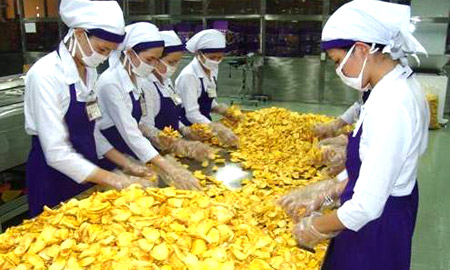News
Chinese market also “hungry for Vietnamese goods”
Update: 9/4/2018
China needs Vietnam’s rubber, cassava and coffee
 |
Vietnamese rubber has become famous in China in the last 20 years, despite a lot of ups and downs due to the unstable trade policies of China.
Deputy Director of Asia Pacific Market Department under the Ministry of Industry and Trade, Dao Ngoc Chuong said that China has become Vietnam’s rubber biggest export market which consumes one billion dollars worth of rubber products a year.
The high demand from China has pushed up the development of Vietnam’s rubber processing industry, from the east of the southern region to the northern border provinces. Vietnam’s rubber has been not only grown in Vietnam, but also in Laos, Cambodia and Malaysia.
However, according to Chuong, one billion dollars worth of rubber imports from China just can meet 40 percent of China’s demand. Rubber is the main input material of the automobile industry and the consumer goods production. Meanwhile, due to the climate and environment disadvantages, China cannot develop growing the rubber itself.
Especially, China now buys tires made in Vietnam instead of importing rubber to make tires domestically. This should be seen as a big opportunity for Vietnam to boost exports to the market.
The second product that the official from China mentions when talking about the trade with China, is sliced cassava. “Vietnam’s cassava exports to China have been skyrocketing over the last few years,” Chuong said. Vietnam’s cassava export turnover was 500 million dollars in 2008-2009, while the figure is expected to reach 700-800 million dollars in 2011.
The energy crisis has forced China to diversify the fuel they use. Besides coal and petroleum, China has to use ethanol petrol which is made of cassava. Therefore, Vietnam believes that the demand for cassava from China is very stably high. The ethanol factories in China, which need 1.5-2 million tons of cassava a day, will not develop if they lack cassava.
The Chinese market is also thirsty for tropical fruits from Vietnam. In fact, Vietnam-sourced fruits can be seen only in the southern provinces of China, while they are now available in the central and northern regions.
“Our exports to China still cannot meet the huge demand of Chinese,” Chuong said.
Vietnam-made pepper, cashew nuts, and coffee are now much in vogue among Chinese young people, who have changed their habits. When shopping for Tet, people go to supermarkets purchasing dried jackfruit products of Vinamit, cakes made of ground green lentils. Especially, Chinese travelers to Vietnam always purchase coffee to give their relatives as a gift.
Vietnam trying to narrow trade gap with China
Many experts have expressed their worries that when Vietnam would be able to narrow the trade gap with China, if Vietnam has just been relying on farm produce and seafood, which only have small export turnover.
Currently, the exports of these products just can bring 15 percent of total export turnover of Vietnam to China, while the other 55 percent has been relying on material goods and industrial products.
However, of the three groups of products, farm produce remain the group where Vietnam has biggest advantages. The successful export of all products, including the small ones, can also help reduce the trade gap and popularize Vietnamese brands in foreign countries.
Pham Huyen












